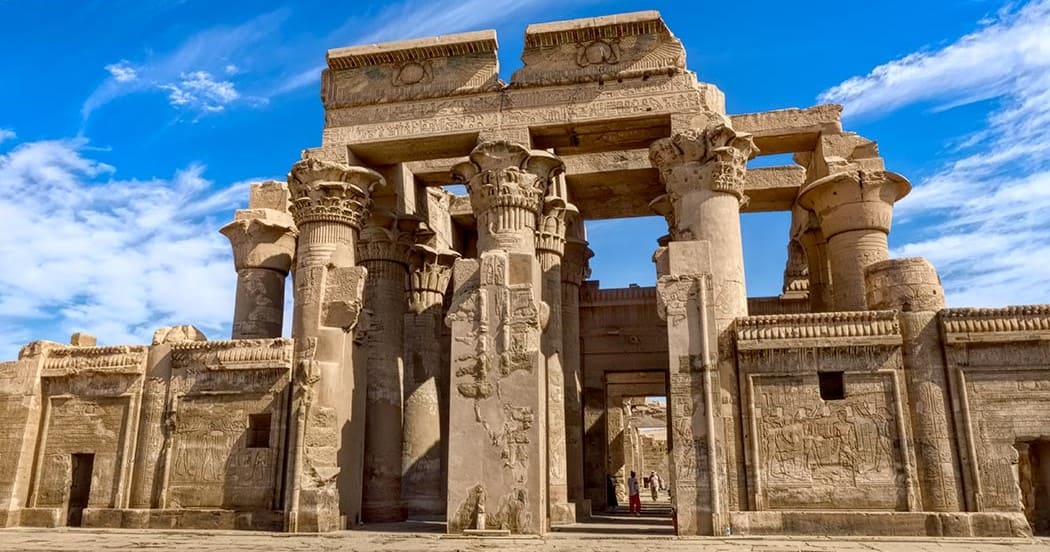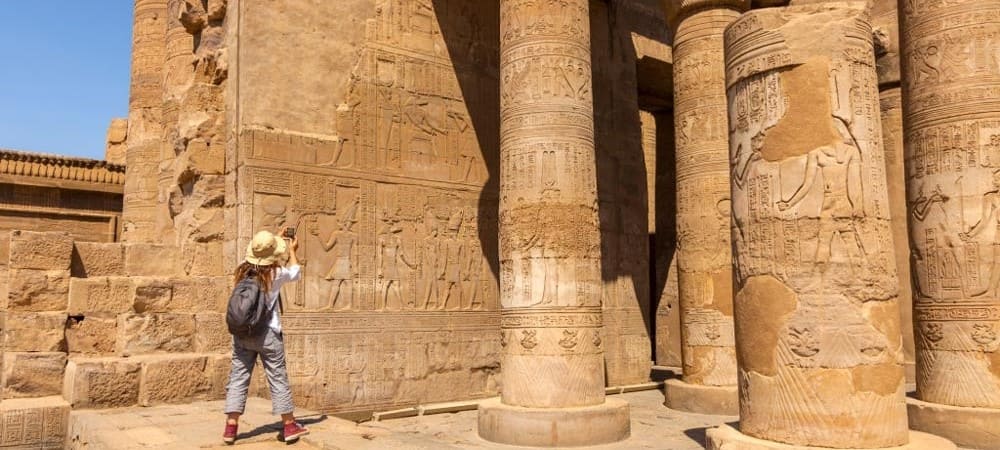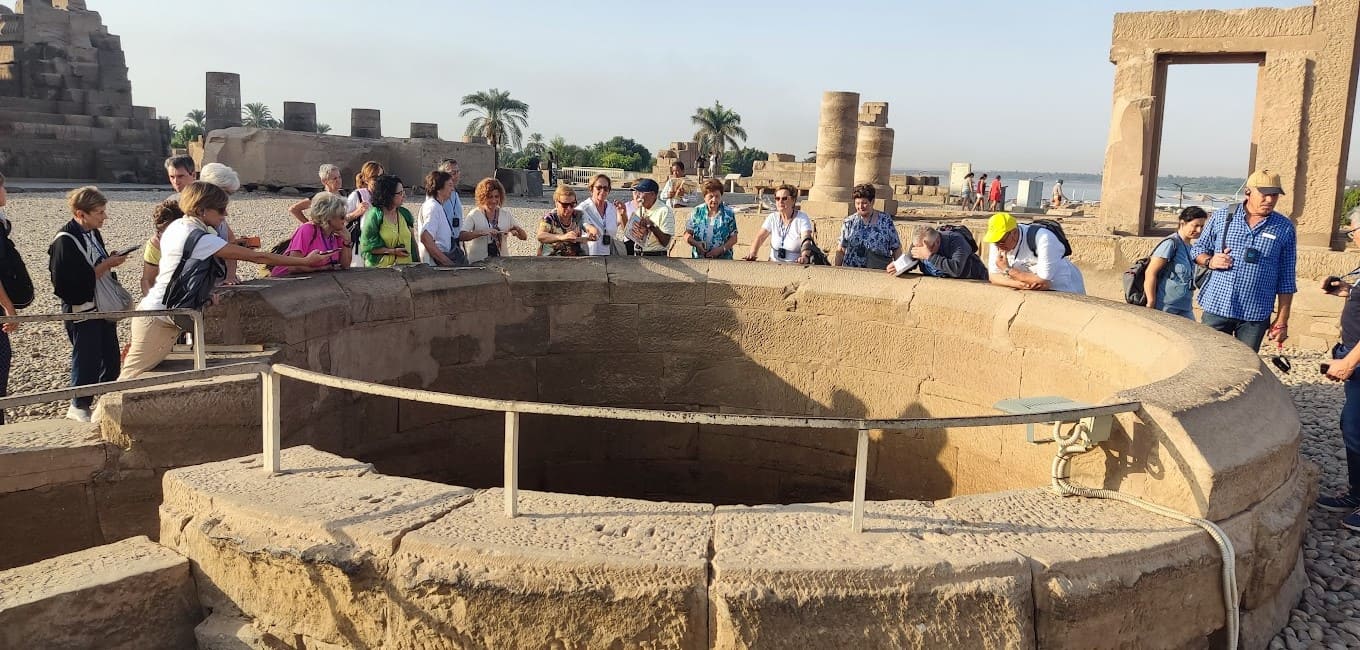Kom Ombo Temple: Sanctuary of Sobek and Horus
Kom Ombo temple is one of the most unique temples in Aswan and probably in Egypt. Kom Ombo means “The Hill Of Gold” as the word “Kom” means “Hill” in Arabic while the word “Ombo” means gold in hieroglyphics. It was constructed by the Ptolemaic dynasty during the Greco-Roman Period. It is located East side of the Nile River in the town of Kom Ombo, 48 km north of the city of Aswan.
What’s so special about the temple of Kom Ombo is that it stands right on the river bank between Edfu and Aswan which makes it a wonderful stop station for Nile cruises and the main highlight of Aswan attractions. While much of the Kom Ombo temple was destroyed over the millennia, it was reconstructed in part, and this towering triple colonnade entryway remains marvelously intact and provides the first hint at the curious and unique design of the doubled Temple of Kom Ombo. It is also still home to several well-preserved and fascinating reliefs, including some intricately carved columns and friezes divided between the two gods.

Until very recently, the River Nile was infested with crocodiles which the Ancient Egyptians naturally scared. However, there was an ancient belief that if they worshipped the animal, it wouldn’t attack them, and at Kom Ombo there was also a small pool in which the reptiles were raised. One of the highlights of the visit to this temple is the Crocodile Museum, where some of the many hundreds of mummified crocodiles found in the area are exhibited along with intriguing explanations.
Kom Ombo temple is considered to be highly specialized and one of a kind as it’s a double-designed temple. As a result, it divided into two identical sectors; the left or northern side dedicated to the worship of Horus who was the falcon-headed sky god, and the right to Sobek, the crocodile-headed god. The two gods are accompanied by their families. They include Horus’ wife Tesentnefert, meaning the good sister, and his son, Panebtawy. Sobek likewise is accompanied by his consort, Hathor, and son, Khonsu. The Ptolemies built it also to confirm their sovereignty and supremacy over the entire country.

This temple was constructed using limestone in a design similar to that of the Greco-Roman period. There are three inner halls, and two sanctuaries; one dedicated to Sobek and the other to Horus. And there is a courtyard and a hypostyle hall inside the temple. There are seven chambers in the inner halls; three are located in the eastern part of the temple and four in the western part. There are also antechambers and smaller rooms, which are used for different rituals and purposes.
Inside the temple, there are some interesting attractions such as; the Chapel of Hathor which is suited to the northeastern section of the temple. It consists of a rectangle-shaped chapel that is reached by climbing some steps. It is also 5 meters long and 3 meters wide. There is also the Chapel of Sobek; located in the northeastern section of the temple and dedicated to the god Sobek, who many Egyptians worshiped. It was constructed in the third century A.D.

There is also in the temple a Nilometer. It is a circular well in the northwestern section of the temple. Ancient Egyptians used it as a Nilometer to measure the water level of the Nile. The Romans constructed this Nilometer and it connected to a smaller water well. These Nilometers were of particular importance, especially during the season of the flooding of the Nile.
Also: You can visit Kom Ombo temple through our Nile cruises as well as tours, check them out, and book your favorite vacation from Here